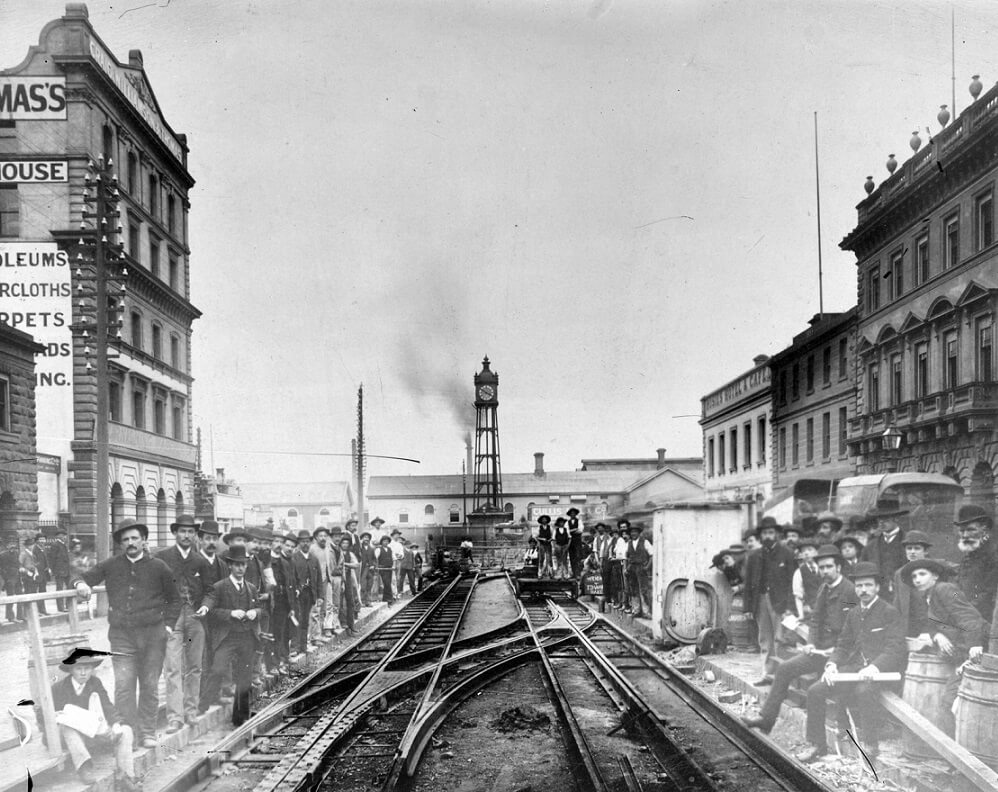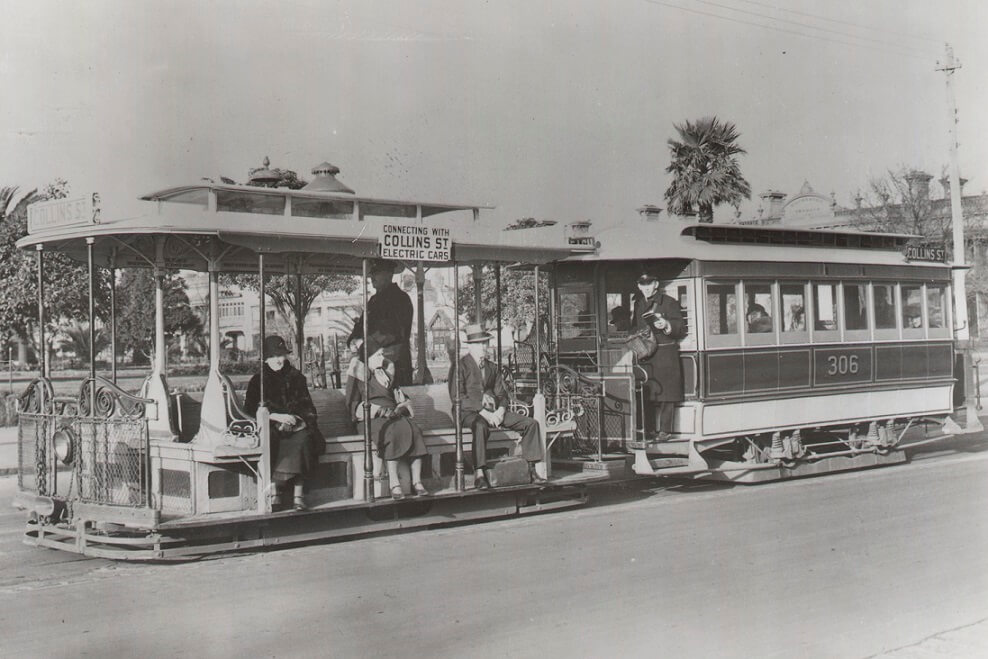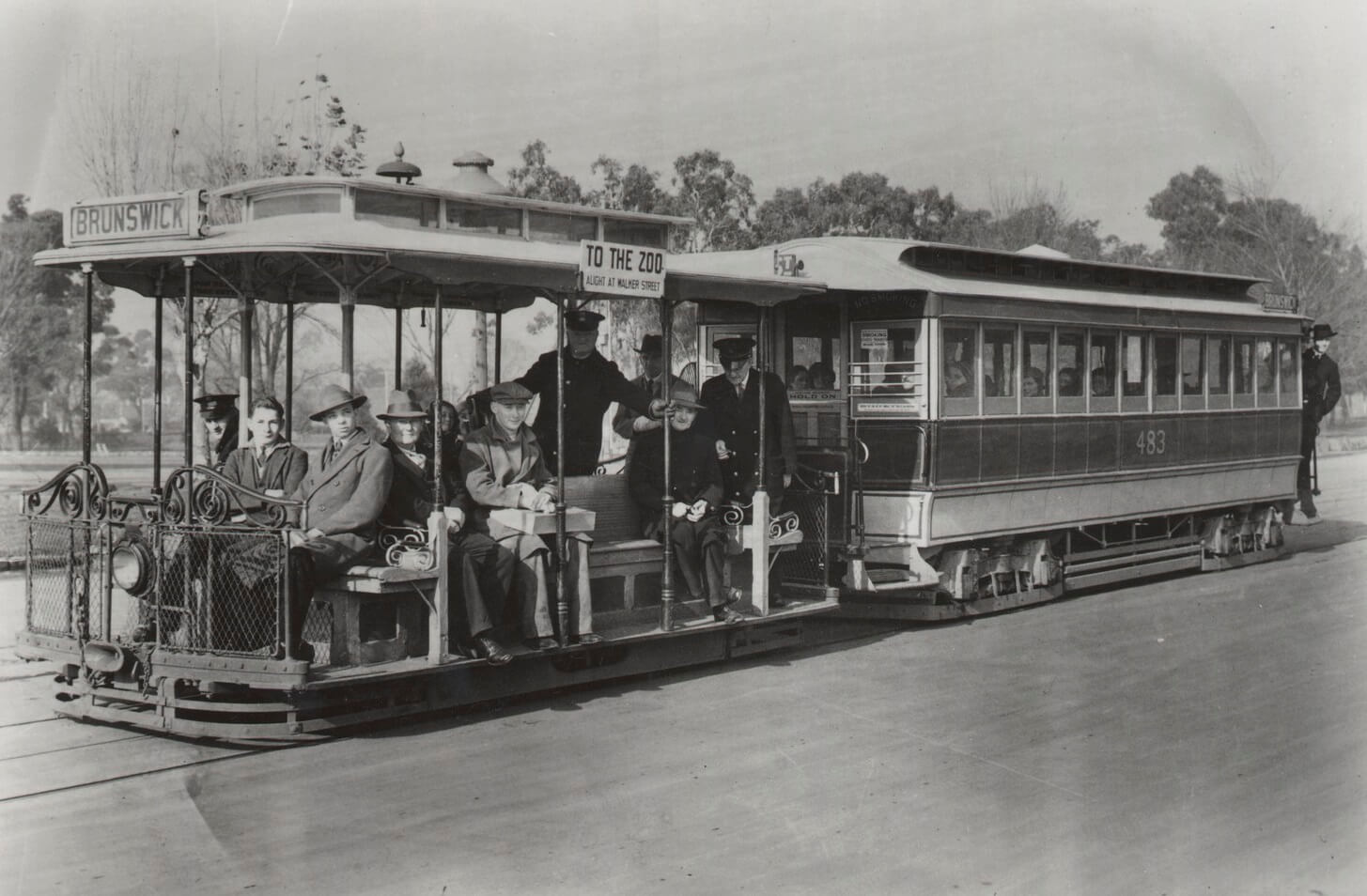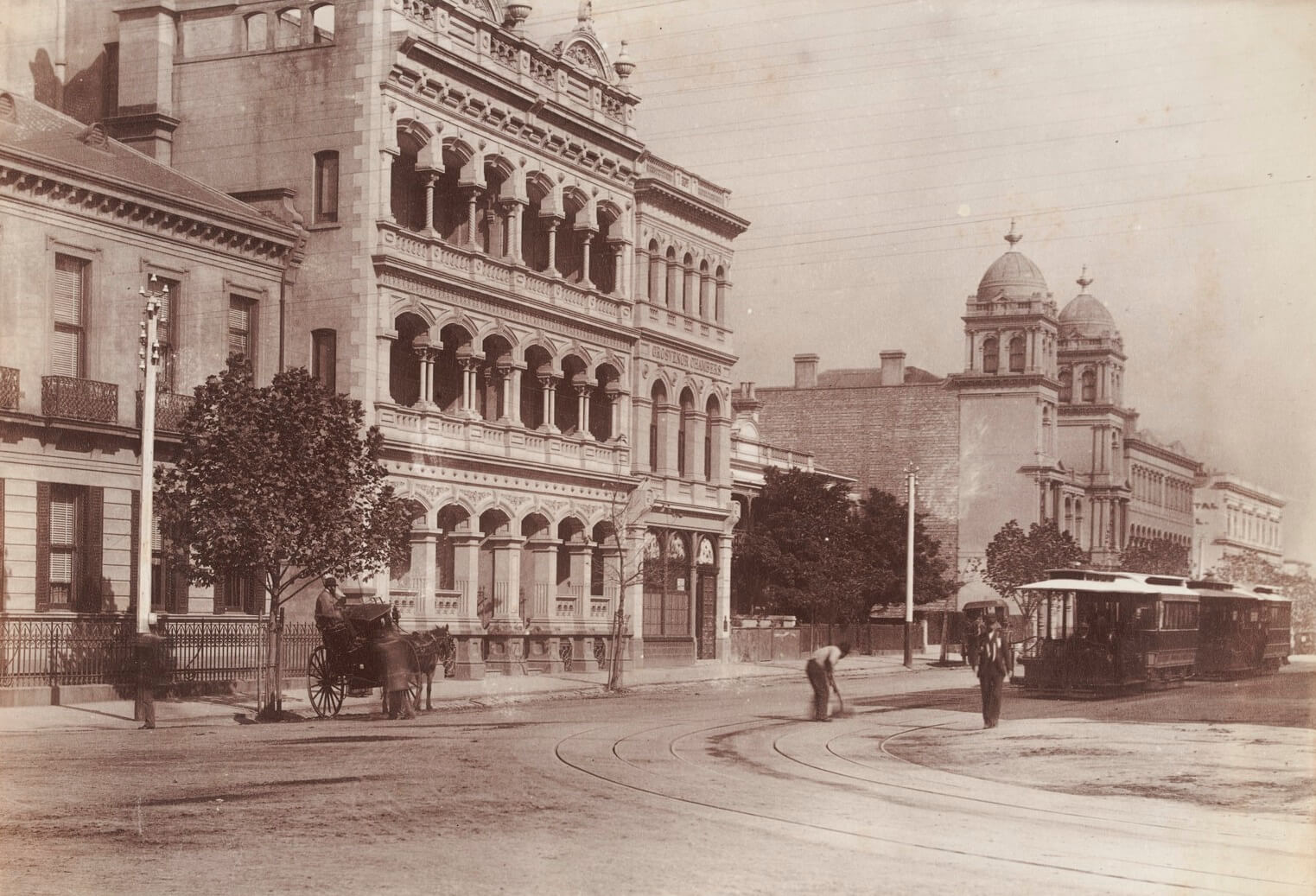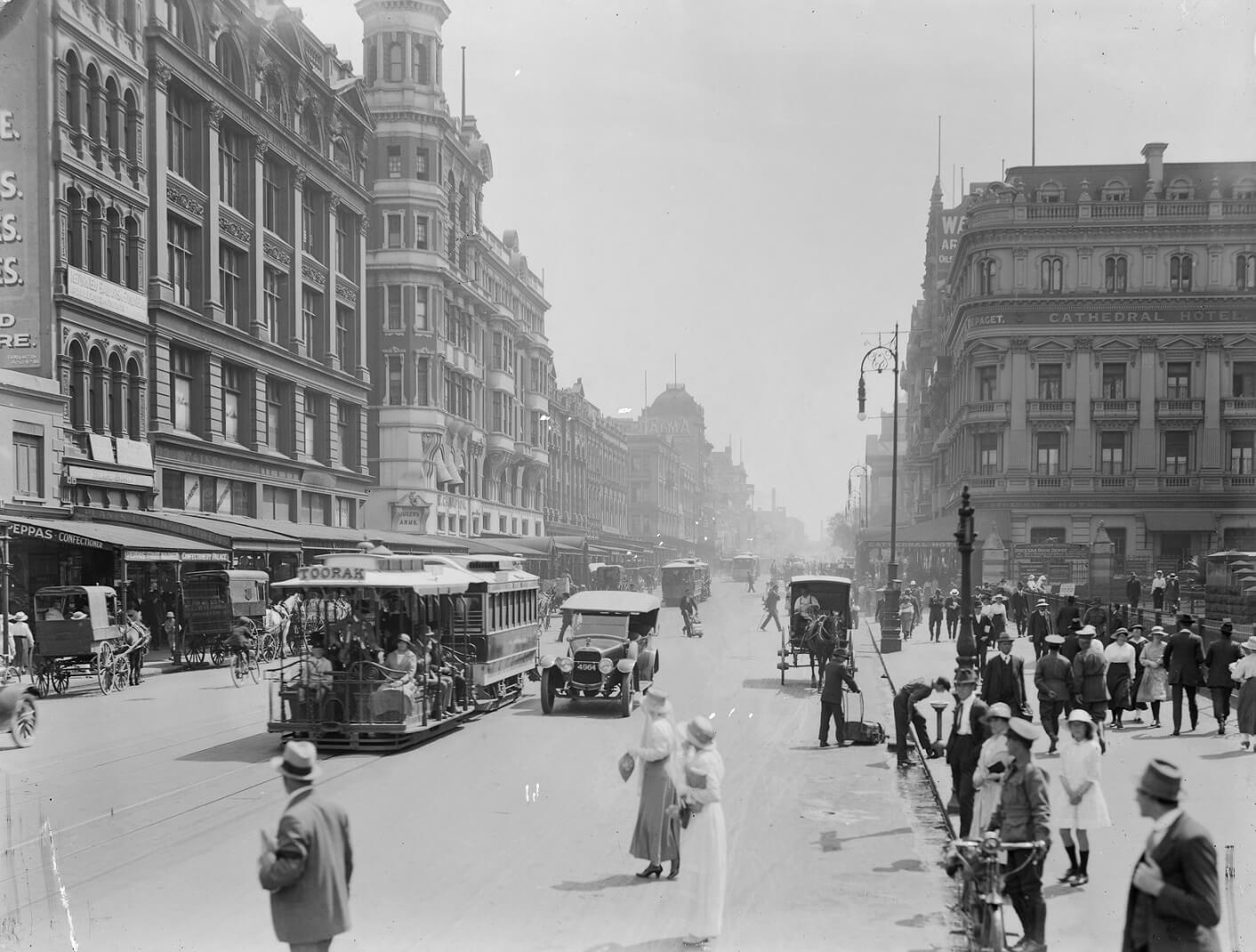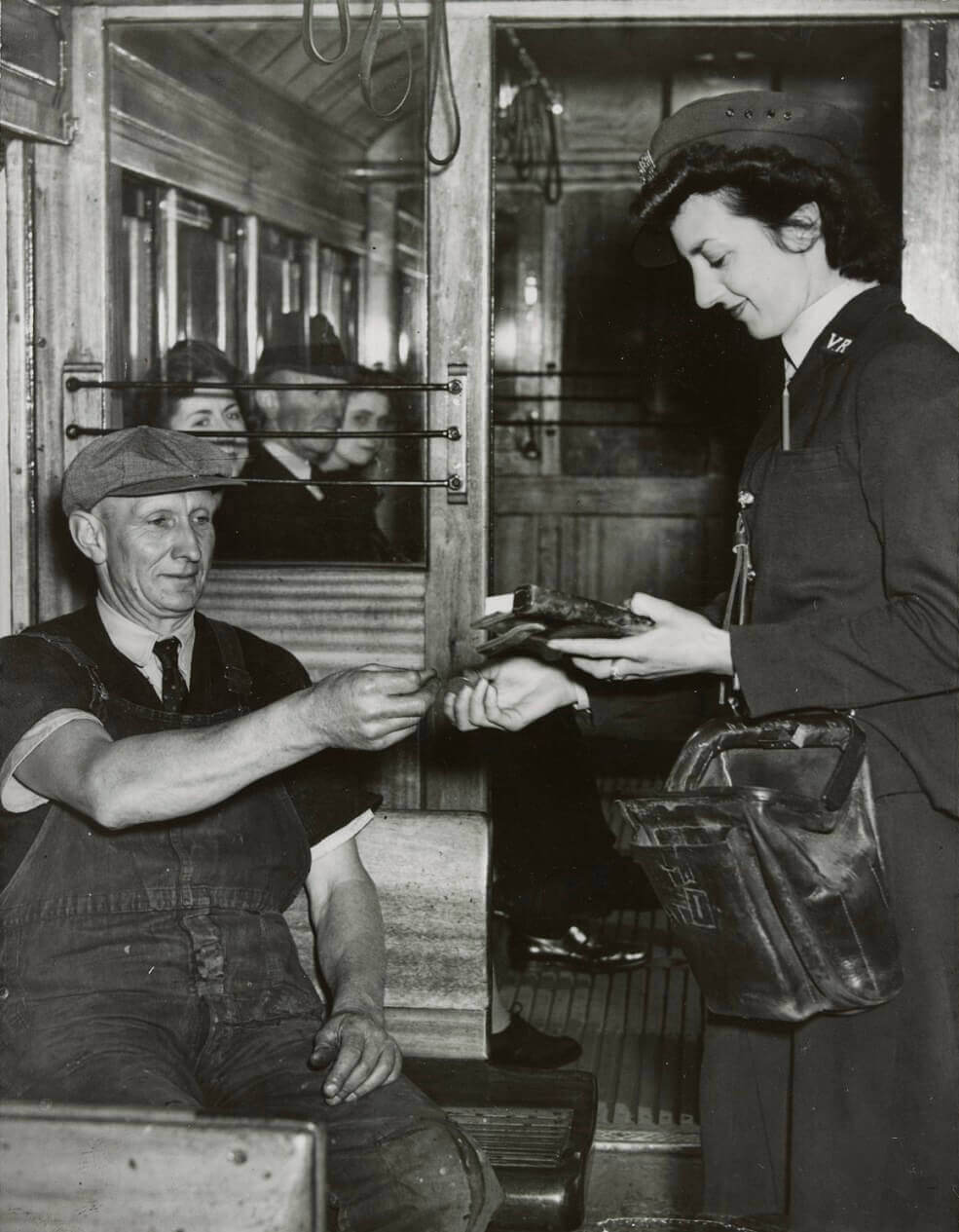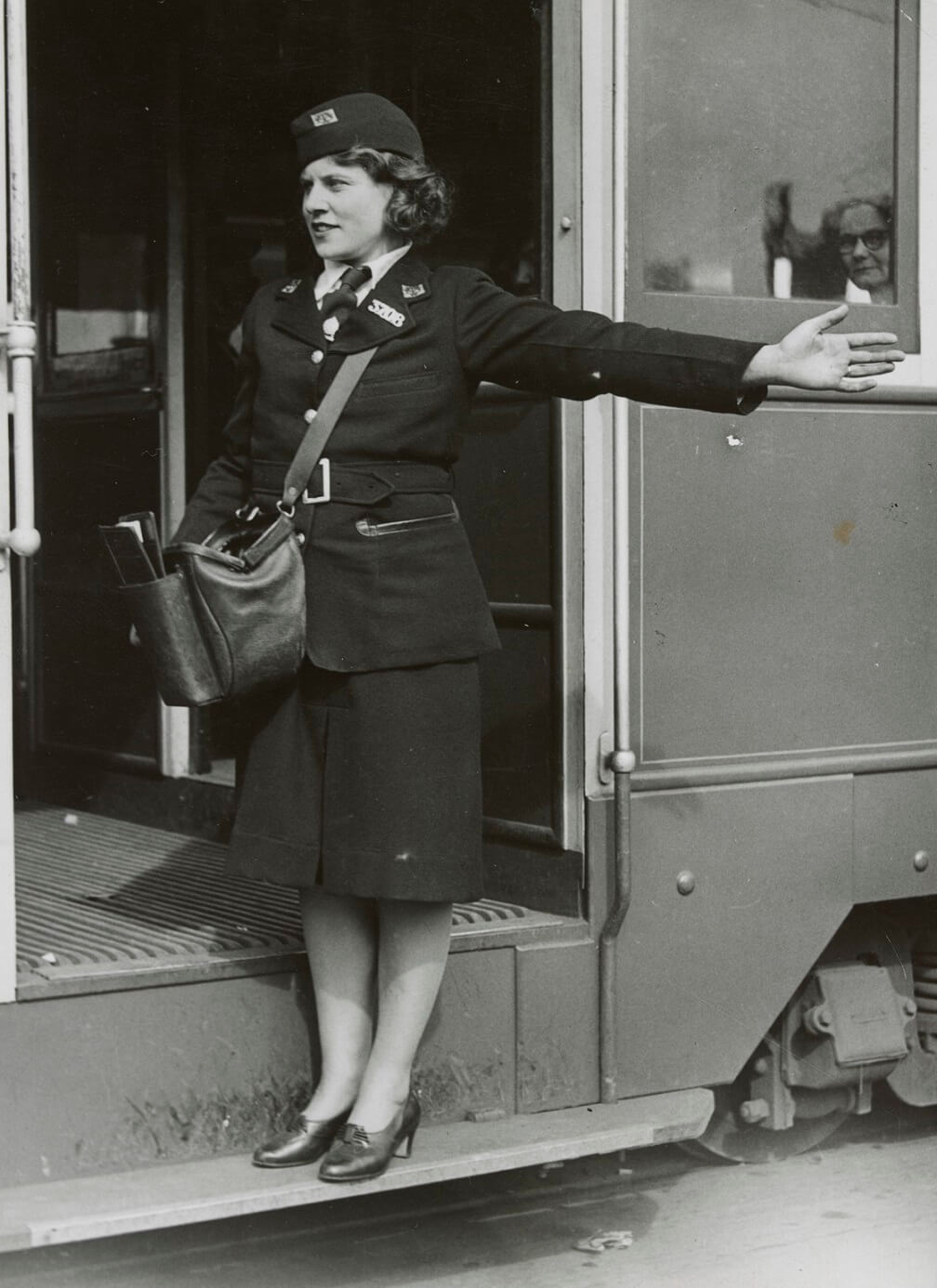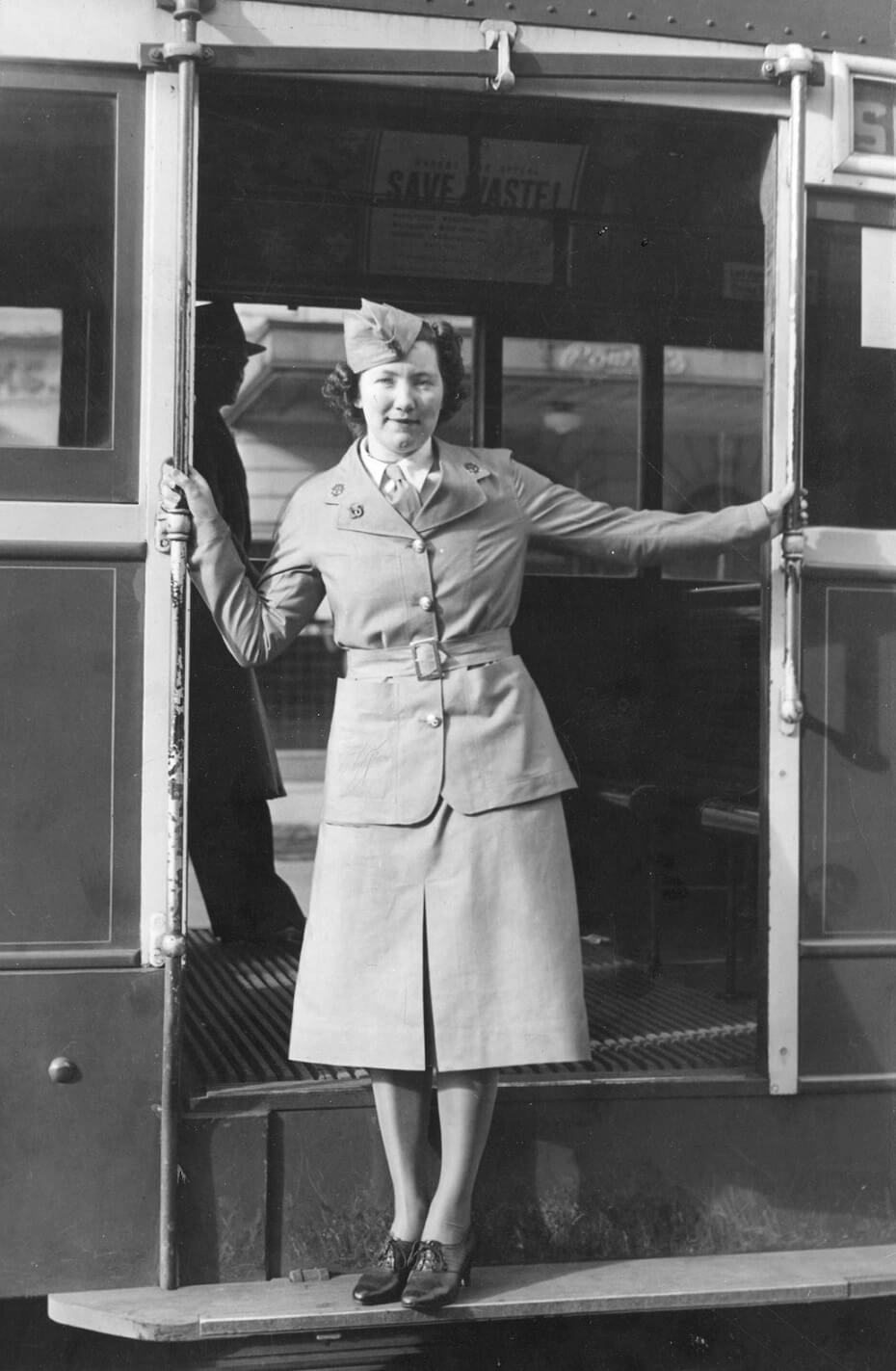For more than 100 years trams have moved Melburnians around the city. The first tram — a cable tram — ran in 1885 from the corner of Bourke and Spencer streets, along Flinders Street, to Bridge Road, Richmond. The cable tram network soon grew to be one of the largest in the world, with 71 kilometres of track. In 1889 they carried 46 million passengers each year. By 1918 this number had more than doubled.
A simple system
Deceptively simple, cable tram technology was developed in the United States during the 1870s. The trams were powered by a continuously-moving cable on pulleys beneath the tram tracks. Cable trams came in sets — the open 'dummy' at the front and the closed ‘trailer’ car behind it. The dummy had a grip mechanism which passed through a slot between the tracks and gripped the cable below. To move forward the driver clamped down on the moving cable: to stop he released the cable and applied the brakes. Over time, cable tramways were converted to electric trams. The last cable tram ran from Bourke Street in October 1940.
Trams today
Melbourne is the only Australian city to have retained its tram network, and it carries millions of passengers each year. According to historian, David Dunstan, Melbourne’s tramways have also been a major employer, welcoming workers from southern Europe, Vietnam and India. Like the wharves, they have been a ‘stronghold of trade union militancy’ and resisted labour rationalisation. An extended strike in 1989 delayed the introduction of automatic ticket machines, but by 1998 the much-loved conductors were replaced by Metcard machines, despite a large public outcry. Privatisation in 1999, accompanied by outsourcing, has resulted in further job losses.
Laying of cable tram tracks in Elizabeth Street, looking towards Flinders Street Station, c.1890
Reproduced courtesy State Library Victoria
The construction of the cable tramway network in Melbourne was a major engineering and logistics task — done by man and horse with few machines. Roads were excavated to a depth of nearly four feet (1.2m) and tunnels constructed to house the cables. Hundreds of tons of iron and steel, vast quantities of wood blocks and concrete were transported and set in place.
The network required an army of workers to run. Tracks and tunnels were inspected regularly by maintenance teams who lubricated pulleys, sheaves and the cable pick-up mechanism. Tunnels and inspection pits were cleaned by hand-operated scrapers. The cables themselves needed constant repair, as protruding broken wires on the cable could foul the grips. Wires were cut and tucked in by the ‘rope man’.
Skilled teams of tradesmen worked at the North Fitzroy workshops, building, painting and servicing the dummies and cars. More men worked in the 11 engine houses which supplied power to run the cables.
Cable trams for Brunswick and Melbourne, by Charles Smallwood, photographer, c.1920
Reproduced courtesy State Library Victoria
A cable tram’s crew consisted of a driver, or ‘gripman’, and conductor. The gripman’s job was skilful, relying on an intimate knowledge of his route. He had to learn how to pick up and release the cable without sudden jerks. When a cable tram took a sharp curve at speed, it would have a ‘curious bounding motion’. Regulations required gripmen to give warning by calling, ‘Hold on while rounding the curve!’ Gripmen were mostly big men with powerful shoulders: it required considerable physical effort to pull and release the grip and brake levers.
The tram was under the control of the conductor and could not move without his signal. They were expected to behave impeccably and were given strict instructions to ‘never allow themselves to get angry, nor enter into any altercation, nor use uncivil language, even under the greatest provocation.’
Conductors were a feature of Melbourne’s trams, both cable and electric, for 112 years.
Affectionately called ‘connies’, the conductor was a much-loved figure. The first female conductors on trams were appointed in 1941, during the wartime ‘manpower shortage’.
Unlike ticket inspectors today, who police fare evasion and issue fines, the connies sold tickets, helped the elderly and parents with prams aboard and assisted people with disabilities. They also provided a measure of security on trams at night. Some connies had big personalities and would stage performances for their passengers.
By 1998 tram conductors had been replaced by ticketing machines. It was a controversial move, and one that has not been forgotten (or forgiven). Even today, more than 20 years later, there is a ‘Bring Back Tram Conductors’ Facebook page.

